Your cart is currently empty!
Search results for: “66”
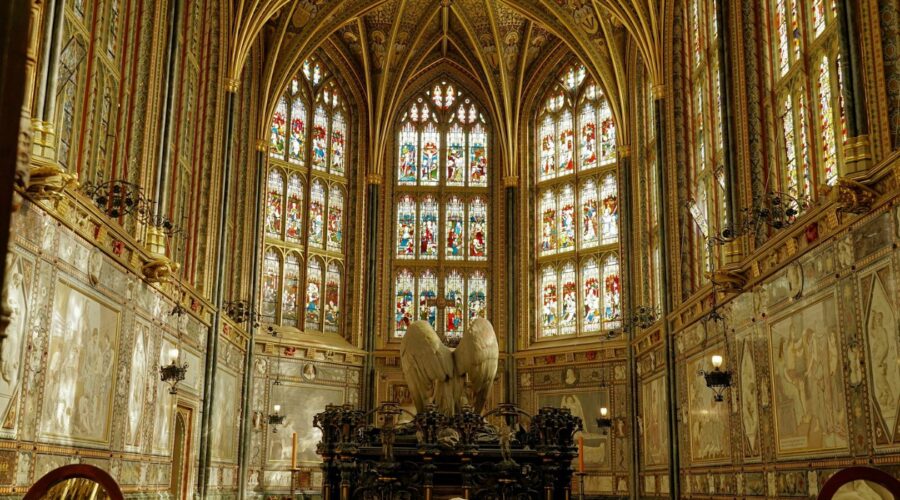
Our Lady of Perpetual Help Church: A Haven of Faith and Devotion
Introduction
Nestled amidst the bustling streets of Baltimore, Maryland, stands Our Lady of Perpetual Help Church, a cornerstone of the Catholic faith and a sanctuary for countless souls seeking spiritual guidance and solace. Founded in 1871, this historic church has witnessed over a century of unwavering faith and devotion, serving as a beacon of hope for generations of parishioners.
History and Significance
The history of Our Lady of Perpetual Help Church is intertwined with the rise of the Irish Catholic community in Baltimore. In the mid-19th century, a large influx of Irish immigrants flocked to the city, seeking a better life in America. They brought with them their strong faith and a desire to establish a parish of their own.
In 1866, Father Patrick McManus, a Redemptorist missionary, purchased land on the corner of Light and Davis Streets. On August 13, 1871, the cornerstone of Our Lady of Perpetual Help Church was laid, and the church was formally dedicated in 1873. Over the years, the church underwent several expansions and renovations, including the addition of a school and a convent.
Architecture and Design
Our Lady of Perpetual Help Church is a magnificent example of Gothic Revival architecture. Its exterior features soaring spires, pointed arches, and intricate stone carvings. The interior of the church is equally impressive, with its high vaulted ceilings, stained glass windows, and ornate altars.
Notable Architectural Features:
- Twin Spires: The church’s twin spires are a prominent landmark in the neighborhood and can be seen from miles around.
- Pointed Arches: The church’s pointed arches are characteristic of Gothic architecture and create a sense of height and grandeur.
- Stained Glass Windows: The church’s stained glass windows depict scenes from the Bible and the lives of saints, flooding the interior with vibrant colors.
- High Altar: The high altar is the focal point of the church and is adorned with elaborate carvings and a beautiful painting of Our Lady of Perpetual Help.
Devotion to Our Lady of Perpetual Help
Our Lady of Perpetual Help Church is named in honor of the venerated icon of Our Lady of Perpetual Help, known throughout the world for its miraculous powers. The icon depicts Mary holding the Christ Child, who is looking at Saint Joseph for comfort. The icon is believed to have originated in Crete in the 15th century and was brought to Rome in the 1860s.
Devotion to Our Lady of Perpetual Help has flourished at the church since its founding. Parishioners have reported countless graces and miracles through the intercession of Our Lady. The church has become a popular destination for pilgrims seeking spiritual assistance and healing.
Parish Life and Activities
Our Lady of Perpetual Help Church is a vibrant and active parish with a wide range of ministries and programs for all ages.
Ministries:
- Altar Servers: Young people assist the priest during Mass.
- Eucharistic Ministers: Parishioners distribute Holy Communion at Mass.
- Lectors: Parishioners read the Scripture readings at Mass.
- Music Ministry: The church has a choir, a cantors’ program, and instrumentalists who enhance the liturgy with their musical talents.
- Outreach Ministries: The church supports various outreach programs, including a soup kitchen, a homeless shelter, and a nursing home ministry.
Activities:
- Religious Education: The church offers religious education classes for children and adults.
- Bible Studies: The church hosts weekly Bible studies for parishioners to deepen their faith.
- Youth Group: The church has a vibrant youth group that provides faith formation and social activities for young people.
- Choir: The church’s choir rehearses weekly and performs at Masses, weddings, and other special occasions.
- Parishioner Socials: The church hosts various social events throughout the year, such as parish picnics, potlucks, and dances.
Community Impact
Our Lady of Perpetual Help Church has played a significant role in the Baltimore community for over 150 years. The church provides spiritual guidance, support, and a sense of belonging to its parishioners.
Beyond its religious mission, the church has been a beacon of hope and support during times of crisis. In the aftermath of the Great Baltimore Fire of 1904, the church served as a temporary shelter for the homeless. During World War II, the church offered prayers and support to the soldiers and their families.
Visiting the Church
Our Lady of Perpetual Help Church is open to visitors daily for prayer and meditation. Guided tours are available upon request. The church is located at 1225 Light Street, Baltimore, MD 21230.
Mass Times Day Time Monday 8:00 AM Tuesday 8:00 AM Wednesday 8:00 AM Thursday 8:00 AM Friday 8:00 AM Saturday 8:00 AM, 4:00 PM Sunday 8:00 AM, 10:00 AM, 12:00 PM, 5:00 PM Conclusion
Our Lady of Perpetual Help Church is more than just a building; it is a living testament to the power of faith. For generations, this historic church has served as a sanctuary for the faithful, offering spiritual guidance, solace, and a sense of community. Its devotion to Our Lady of Perpetual Help has inspired countless miracles and graces, making it a beacon of hope for all who seek her intercession.
Whether you are a lifelong parishioner or a curious visitor, Our Lady of Perpetual Help Church welcomes you with open arms. Come and experience the beauty, history, and spirituality of this beloved Baltimore landmark.
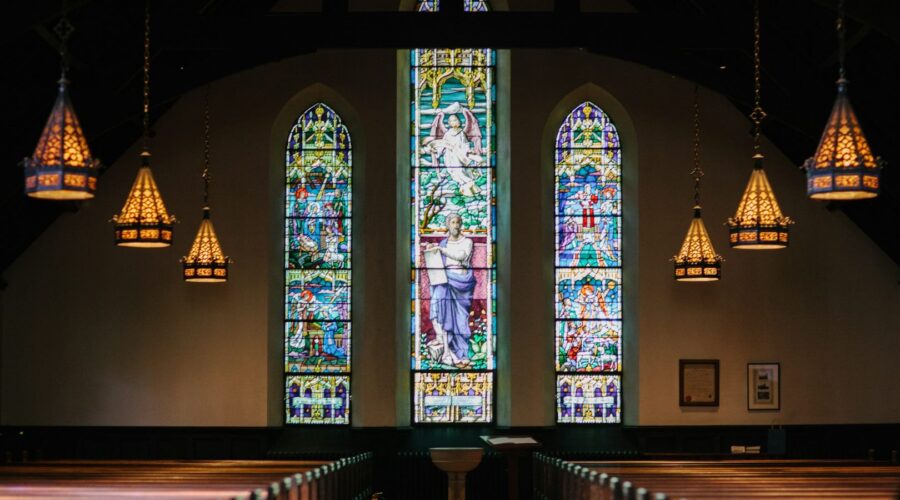
Discover the History, Significance, and Practices of Our Lady of Perpetual Help Church
Introduction
Our Lady of Perpetual Help Church, a sacred sanctuary located in various parts of the world, holds a profound significance within the Catholic faith. This blog post delves into the captivating history, unique attributes, and spiritual practices associated with this cherished church.
History and Origins
Foundation and Establishment
The origins of Our Lady of Perpetual Help Church can be traced back to the 15th century in Italy. In 1493, a fresco of the Virgin Mary was discovered in the Roman church of Sant’Alfonso di Liguori. According to legend, this miraculous image was hidden during a siege and later rediscovered, becoming a source of great devotion.
Spread and Establishment
As the fame of the miraculous icon grew, copies were made and distributed throughout Europe and beyond. In 1866, the Redemptorist order brought a copy of the image to the United States, where it was enshrined in the Church of San Alfonso in New York City. Over time, Our Lady of Perpetual Help Church was established in numerous locations, becoming a beloved destination for pilgrims and devotees.
Unique Attributes
The Miraculous Icon
The central attraction of Our Lady of Perpetual Help Church is the revered icon of the Virgin Mary, known as “Our Lady of Perpetual Help.” This beautiful image depicts Mary holding the infant Jesus with two angels beside her. It is believed that the image possesses miraculous powers and has been credited with countless healings and blessings.
Feast Day and Novena
The feast day of Our Lady of Perpetual Help is celebrated on June 27th. During this special occasion, pilgrims flock to the churches bearing her name for solemn processions and prayers. Additionally, a nine-day novena, a period of prayer and devotion, is traditionally observed before the feast day to honor and seek the intercession of Our Lady of Perpetual Help.
Spiritual Practices
Novenas and Intercessions
Novenas play a vital role in the spiritual practices of Our Lady of Perpetual Help Church. Devotees often offer nine consecutive days of prayers, meditations, and sacrifices in honor of the Virgin Mary, seeking her intercession and guidance.
Miraculous Reliquaries
Many Our Lady of Perpetual Help Churches house miraculous reliquaries that contain relics associated with the Virgin Mary or other saints. Pilgrims believe that venerating these relics can bring about healing and spiritual blessings.
Devotional Objects
A variety of devotional objects, such as scapulars, medals, and prayer cards bearing the image of Our Lady of Perpetual Help, are available at these churches. Devotees wear or carry these objects as a sign of their faith and a symbol of Mary’s protection.
Legacy and Impact
Our Lady of Perpetual Help Church has left an enduring legacy on countless lives. Through its miraculous icon, its spiritual practices, and its unwavering devotion to Mary, the church continues to inspire hope, provide solace, and foster a deep connection between the faithful and the Mother of God.
Conclusion
Our Lady of Perpetual Help Church stands as a testament to the enduring power of faith and the transformative presence of the Virgin Mary in the lives of believers. Whether you seek solace, guidance, or a profound spiritual connection, this sacred sanctuary offers a haven where hearts find peace and miracles unfold.
Additional Information and Resources
- Our Lady of Perpetual Help Novena
- Redemptorist Order: Our Lady of Perpetual Help
- Our Lady of Perpetual Help at Catholic Online
Our Lady of Perpetual Help Church Locations Worldwide Country City Address USA New York City 115 East 116th Street Italy Rome Via Merulana, 31 Philippines Manila 1358 A. Mabini Street, Ermita Mexico Mexico City Avenida Hidalgo 2396, Col. Panamericana 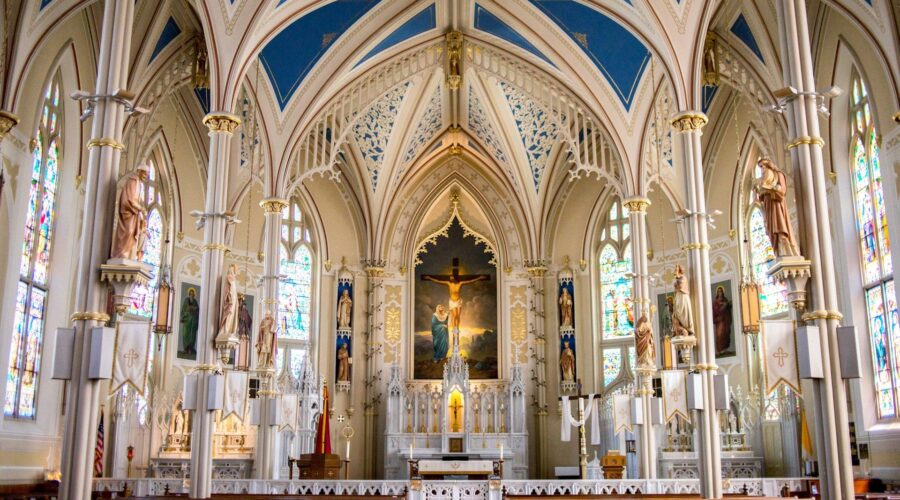
Unveiling the Power of the Novena to Our Mother of Perpetual Help
Introduction
Immerse yourself in the miraculous and life-changing world of the Novena to Our Mother of Perpetual Help. This powerful prayer has been recited by millions of faithful for centuries, seeking solace, strength, and heavenly intervention in their lives. In this comprehensive guide, we will delve into the history, significance, and step-by-step process of performing this sacred devotion.
History of the Novena
Origin:
The Novena to Our Mother of Perpetual Help originated in the late 19th century in Rome. In 1866, Pope Pius IX entrusted the Redemptorist Fathers with a sacred icon of the Blessed Virgin Mary, now known as Our Mother of Perpetual Help. The icon, believed to date back to the 13th century, depicts Mary holding the Infant Jesus, with Saint Alphonsus Liguori and Saint Gerard Majella pleading at her feet.
Miraculous Intervention:
Shortly after the arrival of the icon in Rome, numerous miracles were attributed to the intercession of Our Mother of Perpetual Help. People from all walks of life flocked to the church, seeking her aid in their times of need. The growing devotion and reported miracles led to the establishment of the first Novena in 1871.
Significance of the Novena
Special Graces:
The Novena to Our Mother of Perpetual Help is a special devotion that offers many graces to the faithful. It is believed that through this prayer, one can:
- Obtain special favors and assistance from Mary;
- Experience increased faith, hope, and love;
- Find healing for physical and spiritual ailments;
- Surmount obstacles and challenges;
- Grow in virtue and holiness.
Motherly Intercessor:
Our Mother of Perpetual Help is known for her compassionate and loving nature. She is often referred to as the “Mother of All Helpers” or the “Patroness of the Hopeless.” By praying this Novena, one can tap into Mary’s intercessory power, asking her to bring their petitions to her Son, Jesus Christ.
Step-by-Step Guide to the Novena
Duration:
The Novena to Our Mother of Perpetual Help is typically recited for nine consecutive days. Some choose to pray it during a specific period, such as a particular feast day or during times of distress.
Prayer Structure:
Each day of the Novena consists of specific prayers:
- Opening Prayers:
- Sign of the Cross (in the name of the Father, and of the Son, and of the Holy Spirit.);
- Act of Contrition (O my God, I am heartily sorry… );
- Invocation to the Holy Spirit (Come, Holy Spirit… );
- Novena Prayer:
- Pray the Novena prayer for that specific day.
- Litany of Intercession:
- Recite the Litany of Our Mother of Perpetual Help.
- Concluding Prayers:
- Glory Be to the Father… ;
- Hail Mary, full of grace… ;
- O Most Beautiful Flower… (optional devotion);
- Sign of the Cross.
Suggested Schedule:
Here is a simple schedule for praying the Novena:
Day Prayer Focus 1 For faith and hope 2 For strength in trials 3 For healing of mind and body 4 For protection against harm 5 For forgiveness of sins 6 For conversion of sinners 7 For peace in the world 8 For the dying and departed 9 For special intentions and petitions Tips for Effective Prayer
To enhance the power of your Novena, consider the following tips:
- Set aside a specific time each day for prayer;
- Find a quiet and comfortable place where you can focus;
- Approach the prayer with a sincere and open heart;
- Reflect on the words of the prayers and meditate on their meaning;
- Pray with persistence and trust in God’s will;
- Be patient and don’t expect immediate results;
- Share your prayer intentions with others and ask for their support;
- If possible, visit a church or shrine dedicated to Our Mother of Perpetual Help.
Conclusion
The Novena to Our Mother of Perpetual Help is a powerful and transformative prayer that has touched the lives of countless individuals. By embracing this devotion, we can deepen our connection with Mary, the Mother of God, and experience her loving intercession in our lives. Whether you are seeking spiritual growth, physical healing, or strength in times of trial, the Novena to Our Mother of Perpetual Help offers hope and guidance on your journey. May the grace of Our Mother intercede for us and bring us closer to the love of her Son, Jesus Christ.
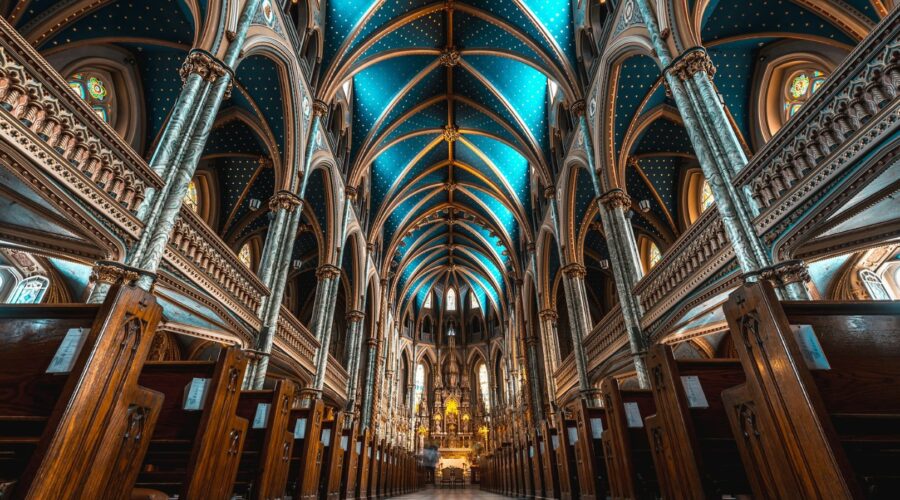
Unveiling the Historic Legacy of St Agnes Church: A Timeless Beacon of Faith
Introduction
St Agnes Church, a hallowed sanctuary standing proudly in the heart of London, has borne witness to centuries of history. Its intricate architecture, poignant memorials, and enduring spiritual presence have captivated generations of worshippers and visitors alike. This comprehensive guide will delve into the rich tapestry of St Agnes Church, exploring its architectural splendor, historical significance, and its role as a vibrant spiritual community.
Architectural Masterpiece
Built in the 13th century, St Agnes Church is a testament to the enduring legacy of medieval craftsmanship. Its exterior façade, an intricate symphony of stone, features a magnificent rose window, graceful pointed arches, and buttresses that soar towards the heavens. The interior, bathed in ethereal light, boasts a nave adorned with delicate columns and vaulted ceilings. The chancel, the most sacred space within the church, is adorned with a reredos depicting scenes from the life of Christ.
The Central Tower
The most striking feature of St Agnes Church is its central tower, a majestic landmark that commands the skyline of the surrounding neighborhood. Rising to a height of over 100 feet, the tower is crowned by a lead-covered spire that has weathered countless storms. The tower houses a set of bells, which ring out melodiously, summoning the faithful to worship and marking special occasions.
The Stained Glass Windows
The stained glass windows of St Agnes Church are breathtaking masterpieces that flood the interior with vibrant hues. Dating back to the Victorian era, these windows depict biblical scenes, saints, and angels. The west window, in particular, is a stunning spectacle, showcasing the crucifixion of Jesus Christ in intricate detail. These windows not only enhance the beauty of the church but also serve as a visual narrative, telling stories of faith, sacrifice, and divine love.
Historical Significance
St Agnes Church has played a pivotal role in the history of London. It has witnessed countless events that have shaped the city’s social, political, and religious landscape.
The Great Fire of London
In 1666, the Great Fire of London devastated much of the city, but St Agnes Church miraculously survived. The church became a sanctuary for those who had lost their homes and a symbol of hope amidst the ashes. The present church building was largely rebuilt after the fire, incorporating elements of both the original medieval structure and the post-fire restoration.
Royal Connections
Throughout its history, St Agnes Church has welcomed royalty within its hallowed walls. In 1547, King Edward VI attended a service at the church. Queen Elizabeth I also visited St Agnes Church during her reign, and her coat of arms can still be seen on the north wall of the chancel.
Social Justice and Community
St Agnes Church has a long tradition of working for social justice and supporting the local community. In the 19th century, the church was instrumental in establishing a soup kitchen and a school for the poor. Today, the church continues to engage in outreach programs, providing food, shelter, and counseling to those in need.
Spiritual Heartbeat
Beyond its architectural and historical significance, St Agnes Church is first and foremost a place of worship and spiritual growth.
Liturgical Tradition
St Agnes Church is an active parish within the Anglican Communion. It follows a traditional liturgical calendar, with services held throughout the week. The Holy Eucharist, the central act of worship in the Anglican tradition, is celebrated regularly. The church also hosts a variety of special services, such as baptisms, confirmations, and weddings.
Music and the Arts
Music plays an integral role in the spiritual life of St Agnes Church. The church has a fine organ, which is used to accompany services and recitals. The church choir, renowned for its beautiful harmonies, leads the congregation in worship and performs a wide repertoire of sacred music. St Agnes Church also hosts art exhibitions and concerts, providing a platform for artists to share their work and inspire the community.
Prayer and Meditation
St Agnes Church is a place of quiet reflection and prayer. The Lady Chapel, a peaceful sanctuary, is dedicated to the Virgin Mary and offers a tranquil space for personal devotion. The church also hosts regular prayer groups and silent retreats, providing opportunities for worshippers to deepen their spiritual connection.
Visiting St Agnes Church
St Agnes Church is a popular destination for tourists and pilgrims. Here are some tips for planning your visit:
- Location: St Agnes Church is located in the heart of London, just a short walk from the Barbican Underground Station on the Circle and Hammersmith & City Lines.
- Visiting Hours: The church is open daily from 8:00 am to 6:00 pm.
- Services: Regular services are held throughout the week, including Sunday services at 8:00 am, 10:00 am, and 6:00 pm.
- Tours: Guided tours of the church are available by appointment. Please contact the church office for more information.
Conclusion
St Agnes Church is a true treasure that has stood the test of time. Its architectural splendor, historical significance, and vibrant spiritual heartbeat make it a pilgrimage site for those seeking beauty, meaning, and a connection with the divine. Whether you are a seasoned Londoner or a first-time visitor, a visit to St Agnes Church promises an unforgettable experience that will leave an enduring mark on your soul.
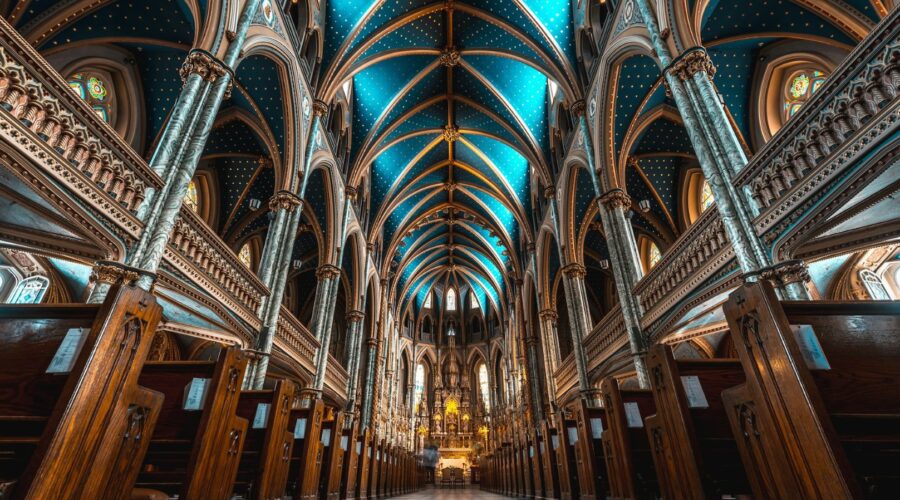
Explore the Enchanting Little Flower Church: Its History, Features, and Significance
Nestled in the heart of Manhattan, New York, the Little Flower Church stands as a magnificent tribute to faith and community. This iconic Roman Catholic parish has a rich history that spans over a century, captivating visitors from all walks of life with its unique architectural features and inspiring spiritual presence.
Historical Background
The Little Flower Church was founded in 1902 to serve the growing Italian immigrant community in New York City. It was named after Saint Thérèse of Lisieux, affectionately known as “the Little Flower of Jesus,” who became a patron saint of the parish.
The church was designed by renowned architect Frederick C. Zobel in the Romanesque Revival style. Its cornerstone was laid in 1903, and the building was completed in 1905.
Architectural Highlights
The Little Flower Church boasts a stunning exterior facade made of Indiana limestone. Its most striking feature is the ornate rose window that adorns the front entrance. The window depicts Saint Thérèse surrounded by angels and lilies, symbolizing her purity and devotion.
Inside the church, visitors are awed by the soaring vaulted ceilings and intricate stained-glass windows. The sanctuary features a beautiful marble altar and a tabernacle that was designed by acclaimed sculptor Karl Bitter.
Community Involvement
Beyond its architectural beauty, the Little Flower Church has played a vital role in the lives of the surrounding community. Throughout its history, the parish has offered a wide range of social services, including:
- Educational programs
- Health clinics
- Soup kitchens
- Immigrant assistance
Spiritual Significance
The Little Flower Church is a place of pilgrimage for many Catholics who seek inspiration from the life of Saint Thérèse of Lisieux. The church’s relics of the saint, which include a piece of her heart, attract visitors from around the world.
The parish community of the Little Flower Church is known for its strong sense of spirituality and its commitment to reaching out to those in need. The church offers regular Masses, sacraments, and prayer services.
Events and Activities
Throughout the year, the Little Flower Church hosts various events and activities, including:
- Novenas to Saint Thérèse
- Pilgrimages to her tomb in France
- Community festivals
- Lectures and workshops on faith and spirituality
Visiting the Little Flower Church
The Little Flower Church is located at 646 66th Street, New York, NY 10065. The church is open to the public daily from 8:00 AM to 6:00 PM.
Visitors are encouraged to call ahead to schedule a guided tour or to inquire about upcoming events.
Additional Information
- Official Website of the Little Flower Church
- Patron Saint of the Little Flower Church: Saint Thérèse of Lisieux
- Architect of the Little Flower Church: Frederick C. Zobel
- Date of Completion: 1905
The Little Flower Church stands as a testament to the power of faith, the beauty of architecture, and the resilience of community. Whether you are a pilgrim, a history buff, or simply seeking a place of spiritual renewal, this iconic landmark is sure to inspire and amaze.
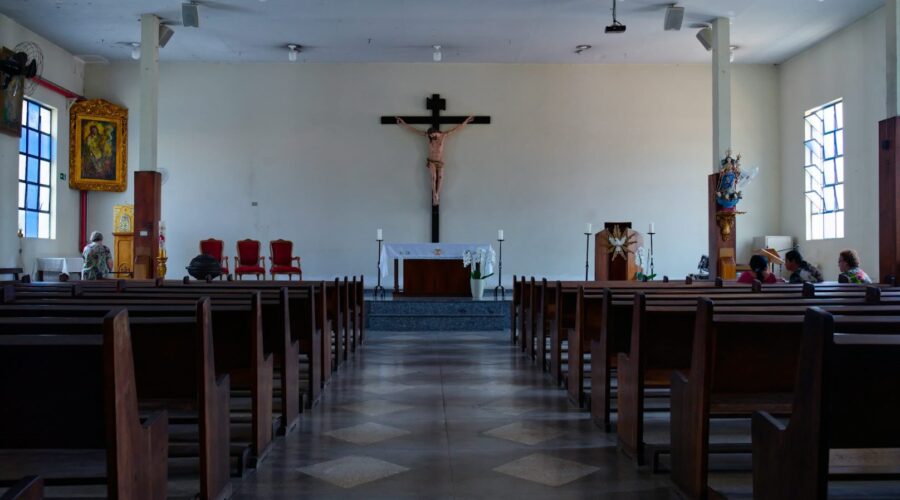
Immerse Yourself in the Vibrant Community of Northside Christian Church
About Northside Christian Church
Nestled in the vibrant heart of Anderson, Indiana, Northside Christian Church has been a beacon of faith and fellowship for over a century. Since its inception in 1921, the church has witnessed countless lives transformed through the transformative power of God’s love.
As a congregation that embraces diversity and inclusivity, Northside Christian Church welcomes people from all walks of life regardless of their background, beliefs, or life experiences. The church’s welcoming and supportive environment fosters a sense of belonging for its members.
Mission and Vision
Northside Christian Church is guided by a mission to “Connect people to Jesus Christ and help them grow in their faith.” This mission is rooted in a vision to be a church that is:
- Relevant and engaging
- Welcoming and inclusive
- Transformational and life-giving
Core Values
The core values of Northside Christian Church shape every aspect of its ministry and outreach:
- Love: Unconditional love for God, ourselves, and others
- Grace: Unmerited favor and forgiveness extended to all
- Service: Using our gifts and resources to bless the community
- Excellence: Striving for the highest standards in everything we do
- Connection: Building strong relationships within the church and beyond
Ministries and Programs
Northside Christian Church offers a wide range of ministries and programs to cater to the spiritual growth, social connections, and practical needs of its members and the wider community:
Worship Services
Sunday morning services feature uplifting music, inspiring messages, and opportunities for prayer and communion.
Life Groups
Small group gatherings that foster spiritual growth, accountability, and fellowship.
Children’s Ministry
A vibrant and age-appropriate program for children from birth to 5th grade.
Youth Ministry
Engaging and relevant ministry for middle school and high school students.
Adult Discipleship
Classes and resources designed to nurture the spiritual maturity of adults.
Community Outreach
The church actively involves itself in community service projects, including food drives, homeless outreach, and mentorship programs.
Leadership
Northside Christian Church is led by a team of dedicated pastors who shepherd the congregation and oversee the church’s ministries:
- Lead Pastor: Rev. Dr. David Weekley
- Executive Pastor: Rev. Brad Bennett
- Associate Pastors: Rev. John Smith, Rev. Mary Johnson
Location and Contact Information
Northside Christian Church is located at 302 E 53rd St, Anderson, IN 46013.
Phone: (765) 643-4660
Email: [email protected]
Website: www.northsidechristian.org
Conclusion
Northside Christian Church is a vibrant and thriving community of faith that welcomes people from all backgrounds into a loving and supportive environment. With a strong emphasis on spiritual growth, fellowship, and service, the church offers a transformative experience for those seeking a deeper connection with God and a purposeful life.
Whether you are a seasoned believer or someone who is just starting to explore the Christian faith, Northside Christian Church invites you to join their journey of faith, hope, and love.

Discover the Rich History and Guiding Principles of the Church of England
Introduction
The Church of England is an historic and influential Christian denomination with a presence in England and beyond. As part of the worldwide Anglican Communion, it boasts a unique blend of tradition and modernity, serving as a pillar of faith for millions around the globe.
Establishment and History
- Saxon Origins: The Church of England traces its lineage back to the early Middle Ages when missionaries from Rome evangelized Anglo-Saxon kingdoms in the 6th century.
- Norman Conquest: The Norman invasion of 1066 brought major changes to the Church, including the appointment of Norman bishops and the introduction of the Gregorian calendar.
- Reformation: The English Reformation in the 16th century saw the Church of England break away from papal authority and establish itself as an independent body under the leadership of the English monarch.
- 19th Century Developments: The Oxford Movement in the mid-19th century emphasized the importance of tradition and ritual within the Church.
- 20th Century: The 20th century witnessed significant changes, including the ordination of women priests in 1994 and the consecration of female bishops in 2015.
Doctrine and Beliefs
- 39 Articles of Religion: The Church of England’s core doctrine is expressed in the 39 Articles of Religion, which were adopted in the 16th century.
- Holy Scripture: The Church believes the Bible to be the inspired Word of God and the ultimate authority for faith and life.
- Book of Common Prayer: The Book of Common Prayer provides prescribed liturgies and prayers for worship services.
- Sacraments: The Church recognizes two sacraments: Baptism and Holy Communion.
- Apostolic Succession: The Church believes in the concept of apostolic succession, tracing its authority back to the apostles of Jesus Christ.
Governance and Structure
- Monarch as Head: The reigning monarch of England is the Supreme Governor of the Church.
- Archbishops of Canterbury and York: The Archbishops of Canterbury and York are the senior bishops of the Church and responsible for its oversight.
- Bishops: Bishops are responsible for the pastoral care of dioceses within the Church.
- Cathedrals: Cathedrals serve as significant centers of worship and administration within the Church.
- Parishes: Local parishes are the foundation of the Church’s work, providing spiritual guidance and support to communities.
Modern Challenges and Initiatives
- Declining Membership: The Church of England has faced challenges in recent years due to declining membership and attendance.
- Social Issues: The Church has engaged in debates and controversies surrounding social issues such as same-sex marriage and the ordination of women.
- Interfaith Dialogue: The Church has made efforts to promote interfaith dialogue and collaboration with other religious communities.
- Mission and Outreach: The Church continues to emphasize its mission of spreading the Christian faith and serving the community.
- Ecumenical Relations: The Church of England plays an active role in ecumenical movements, seeking to build bridges between Christian denominations.
Conclusion
The Church of England remains an influential institution, deeply embedded in English history and society. With its rich doctrinal heritage, complex governance structure, and ongoing engagement with the modern world, it continues to provide spiritual guidance, nurture communities, and play an active role in shaping the nation.
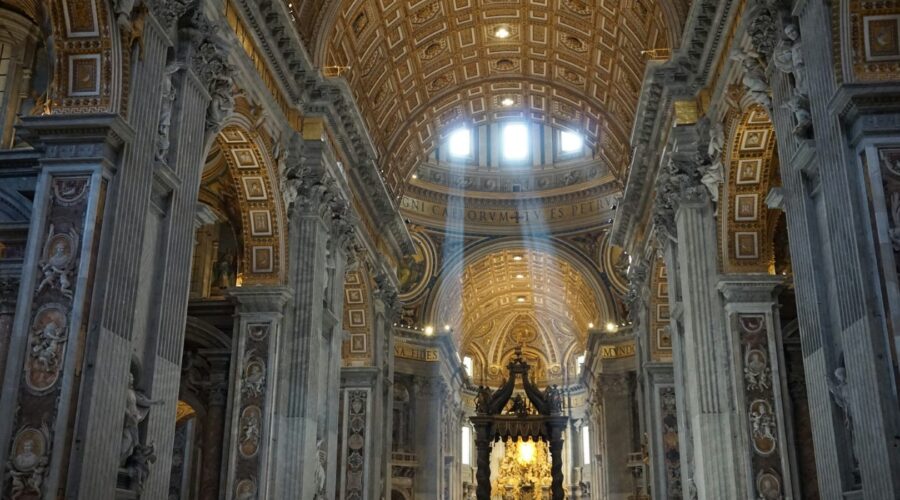
Discover the Historic Charm and Architectural Grandeur of St Paul’s Church
Introduction
Nestled amidst the vibrant streets of London, St Paul’s Church stands as a testament to the city’s rich architectural heritage and enduring faith. This iconic landmark, designed by Sir Christopher Wren, has witnessed centuries of history and continues to inspire awe and wonder in visitors worldwide.
Historical Significance
Foundation and Design
St Paul’s Cathedral was built between 1675 and 1710 to replace the medieval church that had been destroyed in the Great Fire of London in 1666. King Charles II commissioned Sir Christopher Wren to design a grand and majestic cathedral that would symbolize the city’s rebirth and signify its unwavering spirit.
Key Historical Events
- St Paul’s has played a central role in many significant historical events. It hosted the weddings of Prince Charles and Lady Diana in 1981 and Prince William and Kate Middleton in 2011.
- During World War II, the church suffered severe damage from enemy bombings, but was meticulously restored.
Architectural Marvel
Classical Inspiration
St Paul’s Cathedral is renowned for its striking Baroque architecture, which draws inspiration from Italian Renaissance and Roman Baroque styles. Its elegant lines, sweeping dome, and intricate details showcase the architectural brilliance of its time.
Iconic Dome
The centerpiece of the cathedral is its magnificent dome, which dominates the London skyline. Spanning 365 feet in diameter, it is the second-largest dome in the world and an architectural masterpiece. Its intricate design features a series of concentric rings, a lantern, and a gilded ball and cross.
Interior Grandeur
Inside, the cathedral boasts an awe-inspiring interior with soaring arches, delicate carvings, and vast open spaces. The grand nave is illuminated by natural light streaming through the many windows, creating a sense of ethereal beauty.
Religious Significance
Anglican Cathedral
St Paul’s Cathedral is the seat of the Bishop of London and the mother church of the Diocese of London. It is one of the most important Anglican cathedrals in the world and a center of Christian worship and pilgrimage.
National Symbol
The cathedral has become a symbol of national identity and pride for the United Kingdom. Its iconic status is reflected in its frequent use as a setting for royal and national ceremonies, including coronations, weddings, and state events.
Visitor Experience
Guided Tours
Visitors can explore the grandeur of St Paul’s Cathedral through guided tours that provide a comprehensive history and architectural insights. These tours cover the cathedral’s exterior, interior, dome, and various chapels.
Special Events
Throughout the year, the cathedral hosts a variety of special events, including concerts, exhibitions, and services. These events offer a unique opportunity to experience the cathedral’s beauty and spiritual significance in a different light.
Rooftop Walk
For a breathtaking panoramic view of London, visitors can climb the 528 steps to the Golden Gallery at the top of the dome. The Rooftop Walk provides unparalleled vistas of the city and is a must-visit experience.
Tips for Visitors
- Book your tickets in advance to avoid lines, especially during peak tourist season.
- Allow ample time to explore the cathedral, as there is much to see and appreciate.
- Dress respectfully, as the cathedral is a place of worship.
- Consider visiting during off-peak hours for a more peaceful and contemplative experience.
- Take advantage of the free guided tours to learn more about the history and architecture.
Conclusion
St Paul’s Cathedral is a masterpiece of architecture, a symbol of religious significance, and a beloved landmark that weaves together the past, present, and future of London. Whether you are a history buff, architecture enthusiast, or simply seeking a spiritual experience, this iconic church is a must-visit destination that will leave you in awe and wonder.
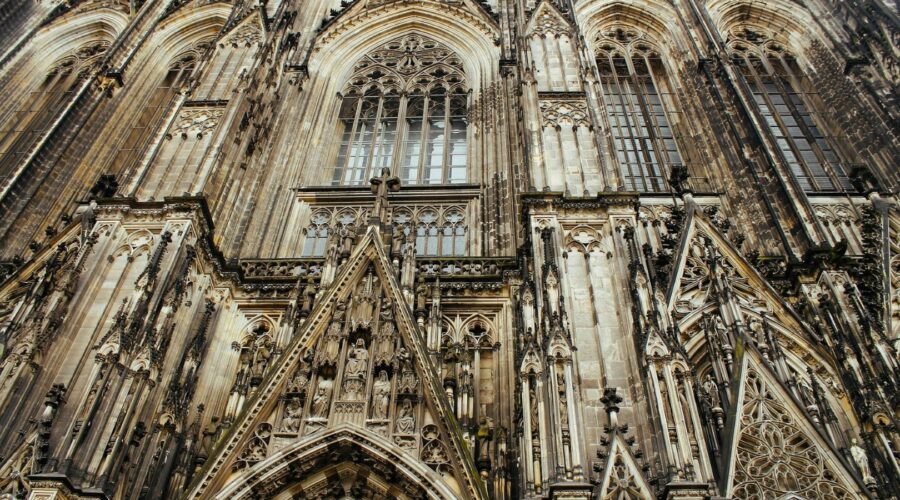
Battle Creek Church: A Comprehensive Guide to Its History, Beliefs, and Programs
History of Battle Creek Church
Battle Creek Church was established in 1855 by James White and Ellen G. White, who were two of the leading figures in the Seventh-day Adventist movement. The church was originally located in Battle Creek, Michigan, but moved to Silver Spring, Maryland in 1989. The church has over 40,000 members worldwide and is a major center for Seventh-day Adventist activity.
Early Years
The early years of Battle Creek Church were marked by rapid growth and evangelism. In 1866, the church established its first publishing house, which would later become the Review and Herald Publishing Association. The publishing house played a major role in spreading the Seventh-day Adventist message around the world.
In 1874, the church established Battle Creek College, which later became Andrews University. Battle Creek College was the first Seventh-day Adventist college and played a major role in training Seventh-day Adventist ministers and missionaries.
Later Years
Battle Creek Church continued to grow in the 20th century, and its membership reached over 10,000 by the 1950s. The church played a major role in the development of the Seventh-day Adventist denomination, and its leaders were instrumental in shaping Adventist doctrine and practice.
In 1989, the church moved its headquarters to Silver Spring, Maryland, where it is located today. The church has continued to grow in recent years, and its membership now exceeds 40,000.
Beliefs of Battle Creek Church
Battle Creek Church adheres to the beliefs of the Seventh-day Adventist Church. These beliefs include:
- The Bible is the only source of truth.
- There is one God who is the Creator of all things.
- Jesus Christ is the Son of God and the Savior of humanity.
- The Holy Spirit is the third person of the Trinity.
- The second coming of Jesus Christ is imminent.
- The Sabbath is a holy day that should be kept from Friday sunset to Saturday sunset.
- Vegetarianism is a healthy and Biblically-based lifestyle.
- The church is a community of believers who should support each other in their Christian walk.
Programs of Battle Creek Church
Battle Creek Church offers a wide range of programs and ministries to its members and the community. These programs include:
- Worship services are held every Saturday morning and are open to the public.
- Sabbath School is a Bible study class that is held every Saturday morning before worship services.
- Youth ministries are offered for children and young people of all ages.
- Adult ministries are offered for adults of all ages.
- Community outreach programs are offered to help the community in a variety of ways.
- Health and wellness programs are offered to help members live healthy and balanced lives.
Conclusion
Battle Creek Church is a vibrant and growing church that is committed to sharing the Seventh-day Adventist message with the world. The church offers a wide range of programs and ministries to its members and the community. If you are looking for a church home, Battle Creek Church is a great option.
Attendance figures for Battle Creek Church Year Attendance 1855 25 1866 100 1874 250 1900 1,000 1950 10,000 2000 20,000 2022 40,000 Visit the Battle Creek Church website for more information.
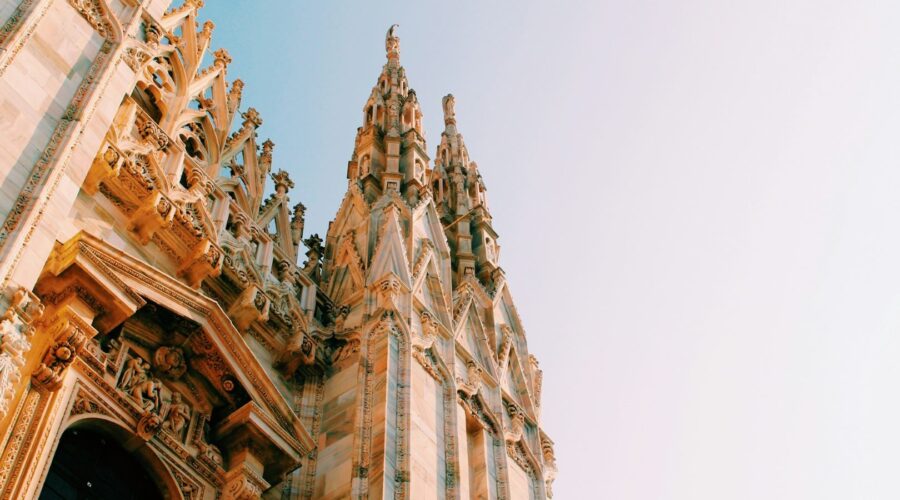
Pastor Gino Jennings: A Deeper Dive into the Man and His Ministry
About Pastor Gino Jennings
Pastor Gino Jennings is a renowned American Christian minister, author, and motivational speaker. He is best known for his influential teachings on faith, leadership, and personal growth.
Born in the Bronx, New York, in 1966, Jennings grew up in a challenging environment. However, he found solace and guidance in his Christian faith. Inspired by his personal experiences, he dedicated his life to helping others navigate life’s challenges and find spiritual fulfillment.
The Impact of His Ministry
Jennings founded The Dream Center in Los Angeles, California, in 1994. The Dream Center is a multi-faceted ministry serving individuals and families in need. Through its various outreach programs, including homeless outreach, food distribution, and addiction recovery services, The Dream Center has made a significant impact in the Los Angeles community.
Key Teachings
1. The Power of Faith
Jennings believes that faith is a transformative force that can overcome obstacles and empower individuals to reach their full potential. He encourages his followers to develop a strong connection with God and to trust in His guidance even in difficult times.
2. The Importance of Leadership
Jennings emphasizes the role of leadership in shaping individuals and communities. He teaches that true leaders are servants who lead with compassion, integrity, and a vision to inspire others.
3. Personal Growth and Development
Jennings encourages personal growth and development. He believes that each person has the potential for greatness and that by embracing challenges and learning from life experiences, individuals can reach their highest potential.
Books and Publications
In addition to his ministry work, Jennings has authored several books that reflect his key teachings. Some of his notable works include:
- The Power of Faith: How to Activate Your Faith to Live a Victorious Life
- The Art of Leadership: How to Become a Leader Others Will Follow
- The Transformation Journey: How to Overcome Obstacles and Achieve Your Dreams
Influences and Inspirations
Jennings has been influenced by various Christian leaders and spiritual teachers. He attributes his passion for ministry to the teachings of renowned preacher Dr. Frederick K.C. Price. Jennings also draws inspiration from the lives and teachings of Mahatma Gandhi, Martin Luther King Jr., and Nelson Mandela.
Awards and Recognition
Jennings’ contributions to the community and his inspiring teachings have been recognized with numerous awards and honors, including:
- Angel Award from the City of Los Angeles
- Humanitarian Award from the Los Angeles County Board of Supervisors
- Doctorate of Divinity from Oral Roberts University
Conclusion
Pastor Gino Jennings is a highly respected and influential leader whose ministry has impacted countless lives. Through his powerful teachings on faith, leadership, and personal growth, he continues to inspire individuals around the globe to reach their full potential and make a positive contribution to society.
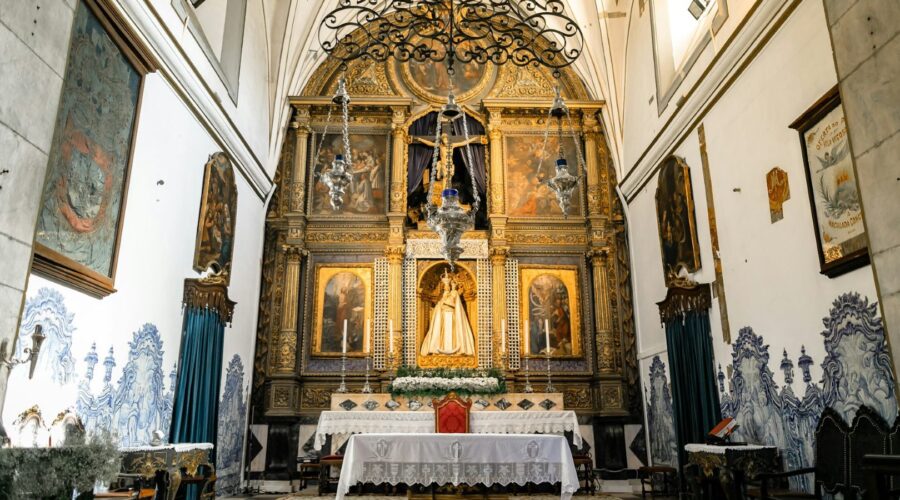
Northside Church: A Comprehensive Guide to Atlanta’s Megachurch
Introduction
Northside Church is a non-denominational megachurch located in Atlanta, Georgia. Founded in 1977, the church has grown to become one of the largest in the country, with over 30,000 members and multiple campuses across the metropolitan area.
History and Vision
Early Years (1977-1995)
Northside Church was founded by Dr. Joel C. Hunter, who served as its senior pastor for over four decades. The church began with a small group of just 50 people and gradually expanded its reach through community outreach and evangelistic programs.
Growth and Expansion (1995-2022)
Under Hunter’s leadership, Northside Church experienced significant growth. The church purchased a large campus in Alpharetta, Georgia in 1995 and began broadcasting its services to audiences around the world. It also established multiple branch campuses in the Atlanta area and launched various ministries and programs to meet the needs of its growing congregation.
Transition and New Direction (2022-Present)
In 2022, Dr. Hunter retired as senior pastor of Northside Church and was succeeded by Dr. Steve Briggs. Under Briggs’ leadership, the church has continued its focus on community engagement and spiritual growth while also exploring new initiatives in technology and digital ministry.
Campuses and Locations
- Alpharetta Campus (Main Campus)
- Sandy Springs Campus
- Chamblee Campus
- Johns Creek Campus
- Cumming Campus
- Gwinnett Campus
Ministries and Programs
Northside Church offers a wide range of ministries and programs for people of all ages and backgrounds.
Worship and Music
Northside Church is known for its vibrant worship services, which feature contemporary music, engaging sermons, and a focus on spiritual connection.
Children and Youth
The church has extensive programs for children and youth, including Sunday School, youth groups, and mentorship programs.
Small Groups
Northside Church encourages members to connect with each other through small groups, where they can build relationships, share their faith, and support one another.
Community Outreach and Social Justice
Northside Church has a strong commitment to community outreach and social justice. The church supports a variety of ministries that address issues such as poverty, homelessness, and healthcare access.
Leaders and Staff
Senior Pastor
Executive Pastor
Chief Finance Officer
Giving and Stewardship
Northside Church encourages members to give generously to support its ministries and outreach programs. The church offers various ways to give, including online giving, text-to-give, and giving envelopes.
Conclusion
Northside Church is a dynamic and growing megachurch that plays a significant role in the spiritual and social fabric of Atlanta. With its vibrant worship services, diverse ministries, and commitment to community engagement, Northside Church continues to inspire and uplift its members and serve the broader community.
Northside Church Campuses Campus Address Contact Alpharetta Campus 12010 Haynes Bridge Road, Alpharetta, GA 30009 (770) 645-5000 Sandy Springs Campus 5975 Roswell Road, Sandy Springs, GA 30328 (770) 645-5000 Chamblee Campus 5140 Chamblee Dunwoody Road, Dunwoody, GA 30338 (404) 457-5566 Johns Creek Campus 11230 Medlock Bridge Road, Johns Creek, GA 30097 (770) 474-3300 Cumming Campus 4370 Peachtree Parkway, Cumming, GA 30041 (470) 253-0700 Gwinnett Campus 4090 Peachtree Industrial Boulevard, Buford, GA 30518 (770) 474-3300 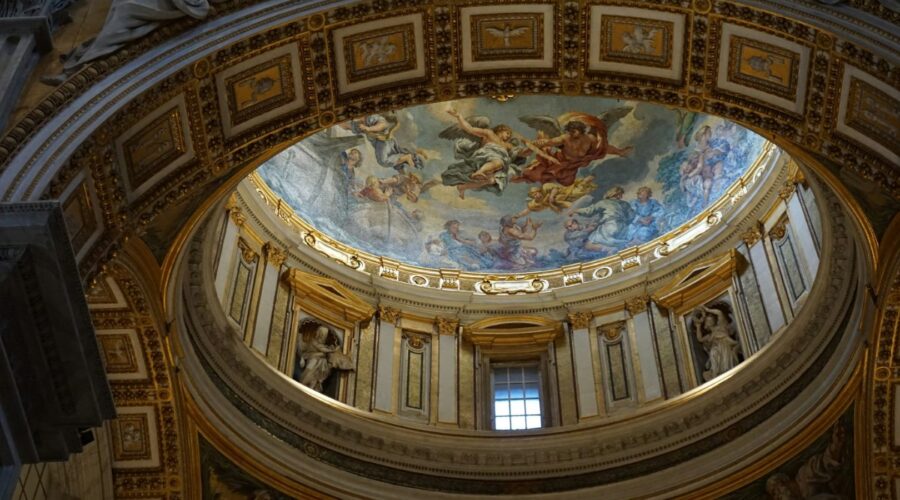
Unveiling the Essence of Central Presbyterian Church: A Comprehensive Guide
Embark on a spiritual journey at the heart of the historic Central Presbyterian Church. This renowned sanctuary has been a beacon of faith and community in the city for over a century. Let’s delve into its rich history, vibrant ministries, and captivating architectural splendor.
Historical Tapestry
1890: Birth of a Congregation
Inspired by a desire for a Presbyterian presence in the city’s burgeoning downtown, a group of faithful pioneers gathered to establish Central Presbyterian Church in 1890.
1906: A Majestic Edifice
Construction of the iconic Central Presbyterian Church sanctuary commenced in 1906. Renowned architect Ralph Adams Cram designed the masterpiece in a blend of Gothic and Romanesque Revival styles.
1966: A National Landmark
Recognizing its architectural and historical significance, Central Presbyterian Church was designated a National Historic Landmark in 1966, joining the ranks of America’s most treasured landmarks.
Diverse Ministries
Worship Services
- Traditional Sunday Services
- Contemporary Sunday Services
- Special Services for Holidays and Occasions
Christian Education
- Sunday School Programs for All Ages
- Bible Study and Discussion Groups
- Confirmation and Youth Groups
Community Outreach
- Soup Kitchen and Food Pantry
- Tutoring and Mentoring Programs
- Partnerships with Local Non-Profits
Architectural Marvel
Exterior Grandeur
The church’s exterior facade captivates with its intricate Gothic arches, soaring bell tower, and stained glass windows depicting biblical scenes.
Sanctuary’s Majestic Interior
Inside, the sanctuary unfolds in all its glory, featuring vaulted ceilings, massive columns, and an awe-inspiring pipe organ.
Historical Artifacts
The church houses a collection of historical artifacts, including ancient Bibles, communion vessels, and original architectural drawings.
Practical Information
Location and Contact
Central Presbyterian Church is conveniently located at 929 I Street, NW, Washington, DC 20001.
Website | Phone: (202) 638-1331
Service Times
- Sunday: 9:30 AM (Traditional), 11:00 AM (Contemporary)
- Weekdays: Consult the church website or call for specific times
Accessibility
The church is wheelchair accessible, with ramps and elevators. Assistive listening devices are also available.
Conclusion
Central Presbyterian Church stands as a testament to the power of faith, community, and architectural artistry. Its historic legacy, vibrant ministries, and captivating sanctuary make it a destination for spiritual seekers, history buffs, and architecture enthusiasts alike. Whether you seek a place for worship, connection, or simply an appreciation of beauty, this landmark church welcomes you with open arms.